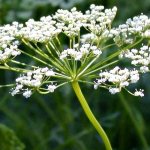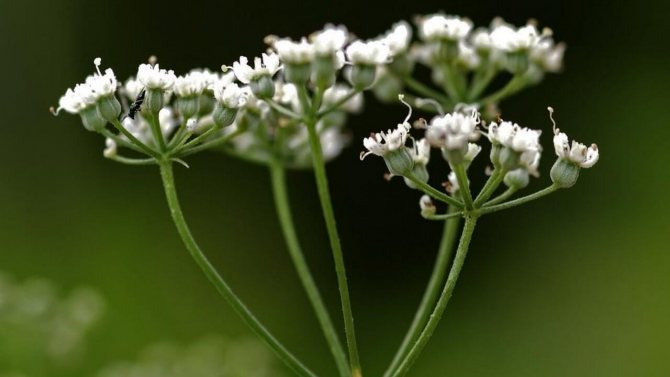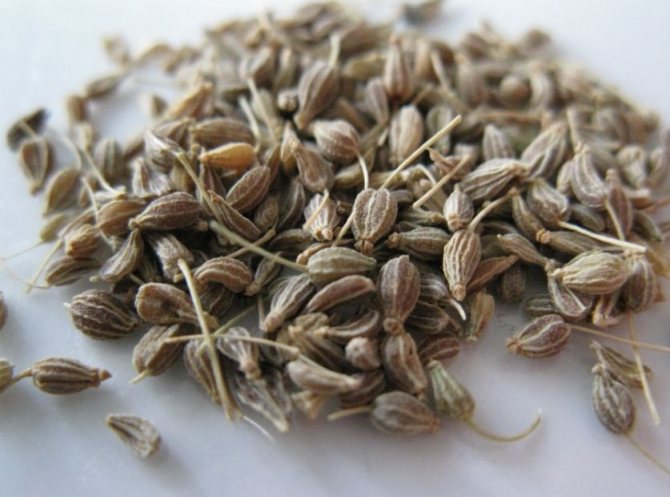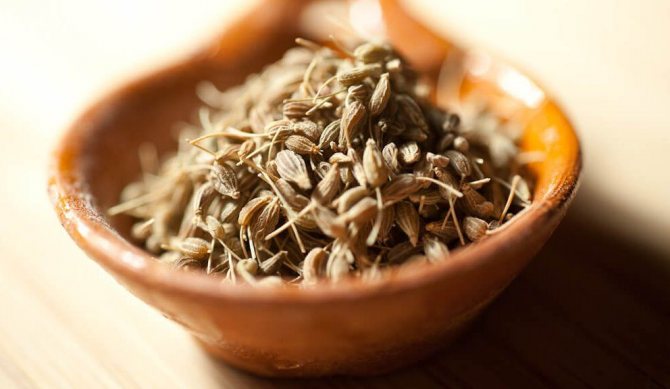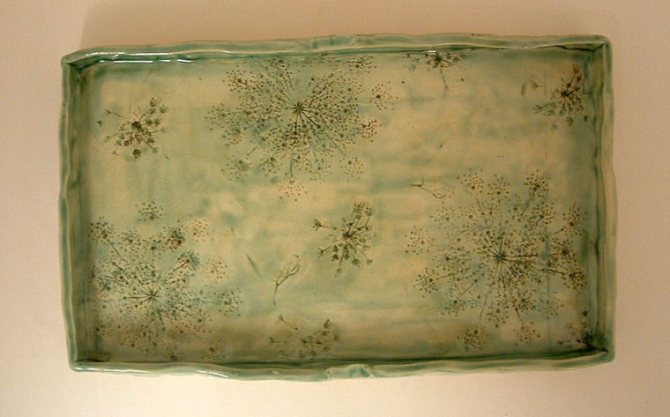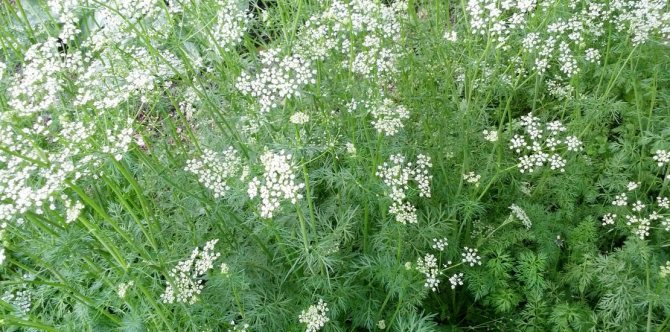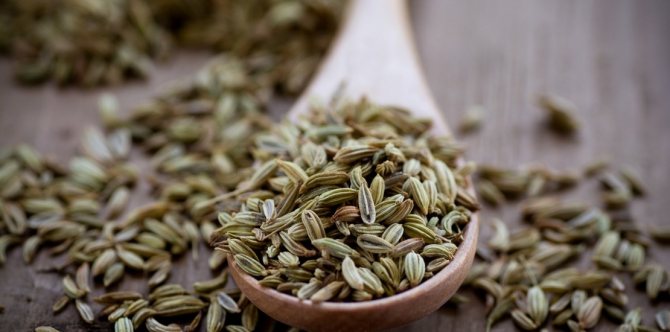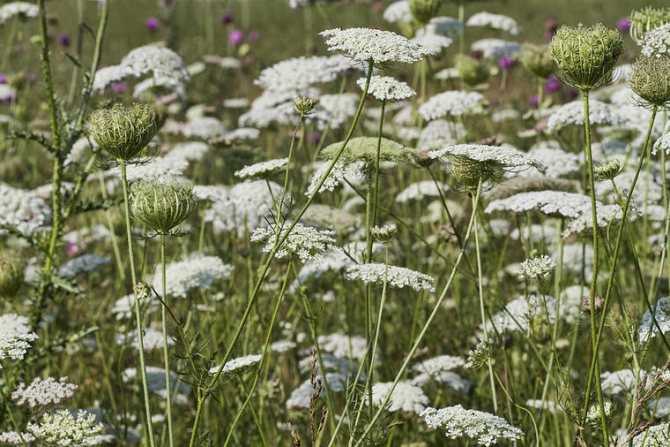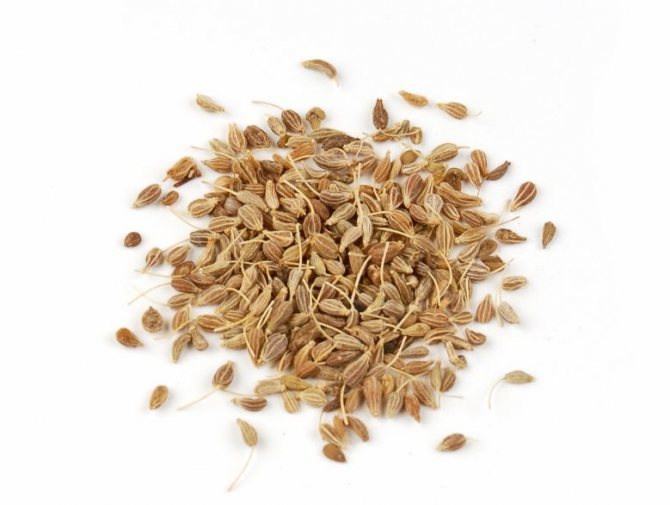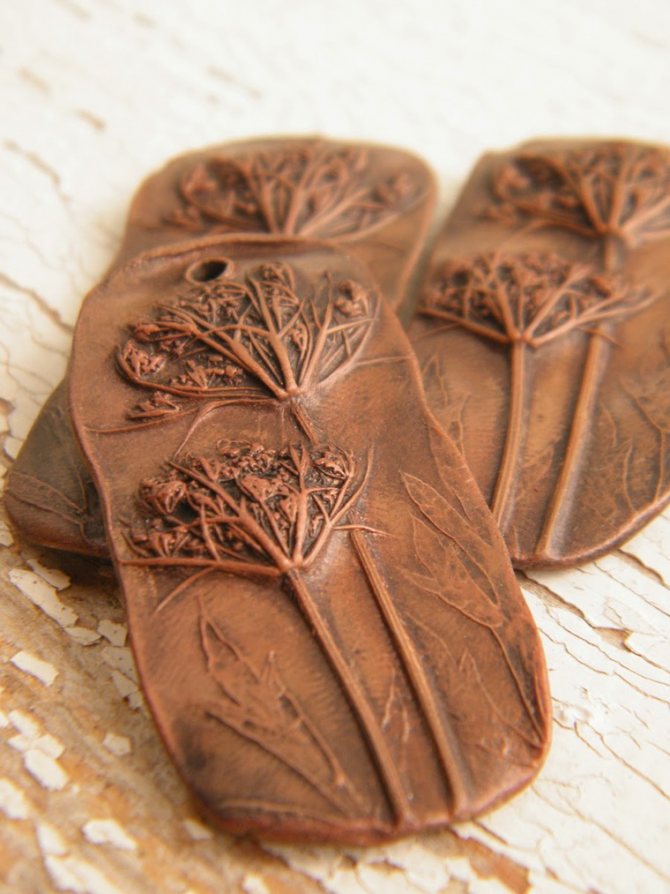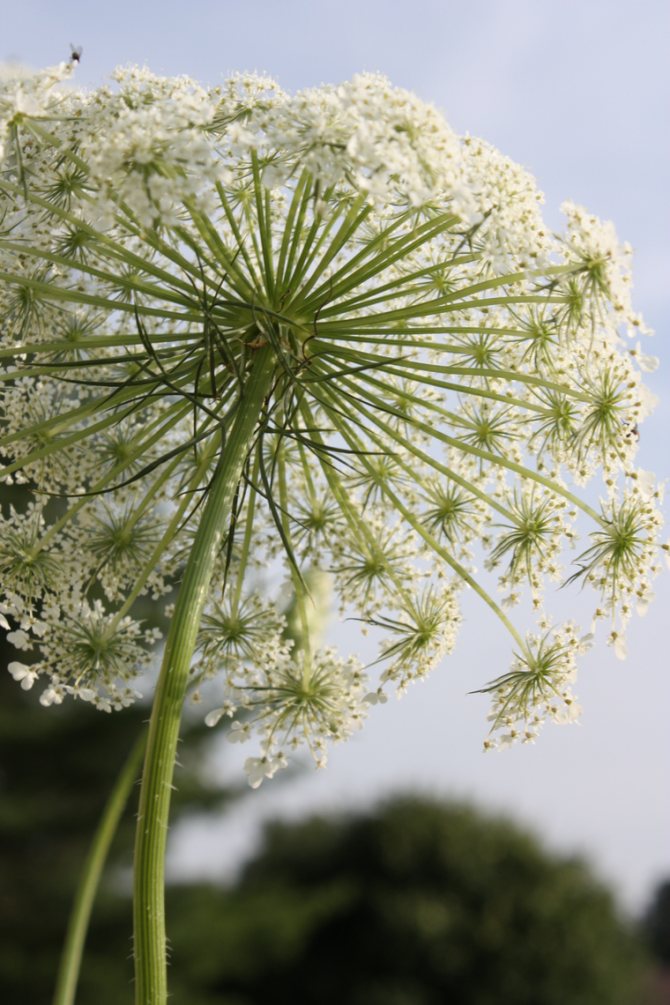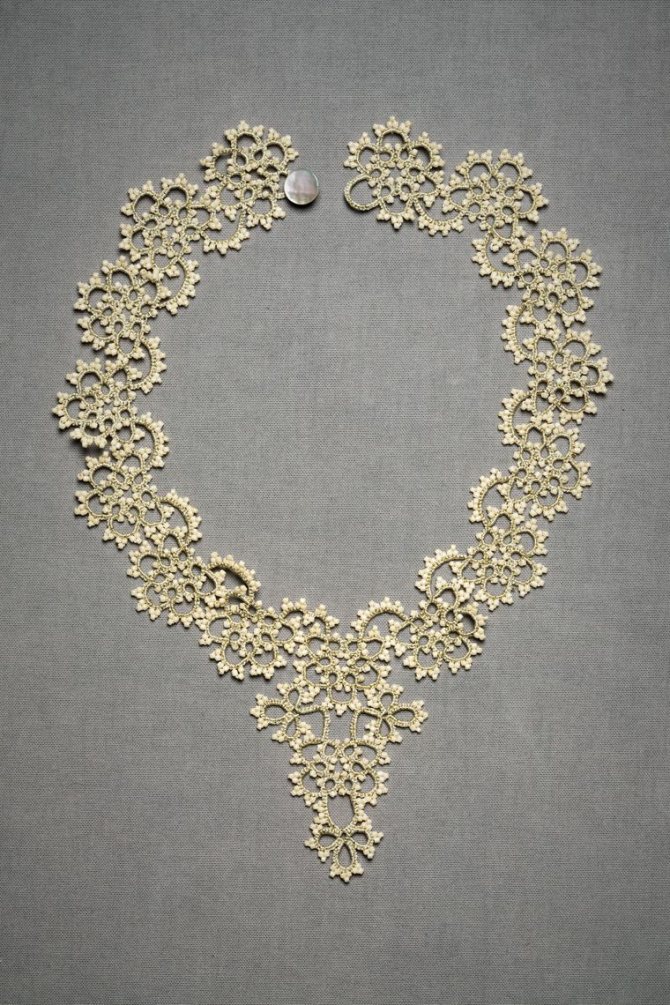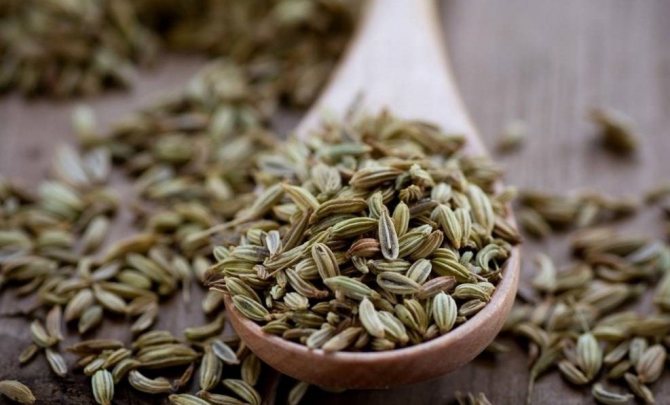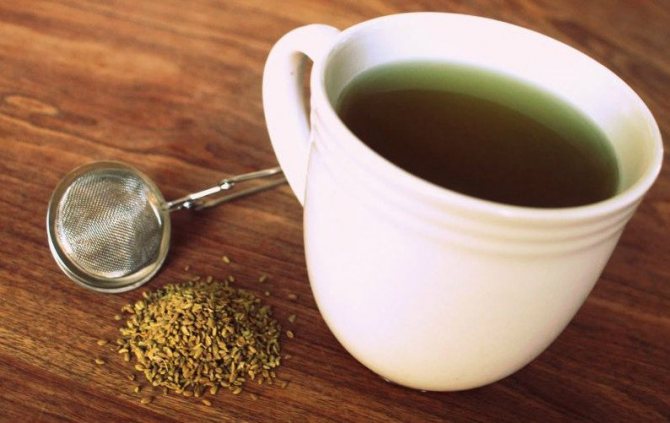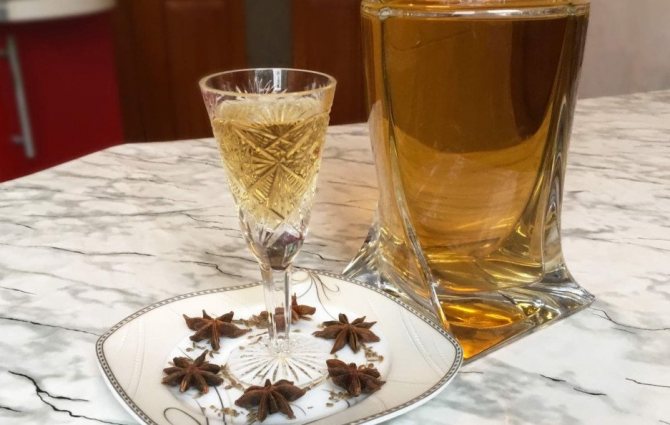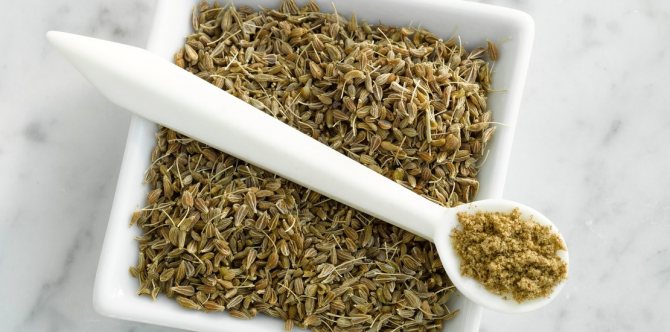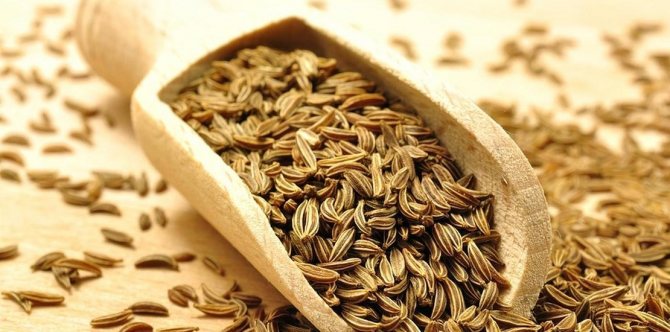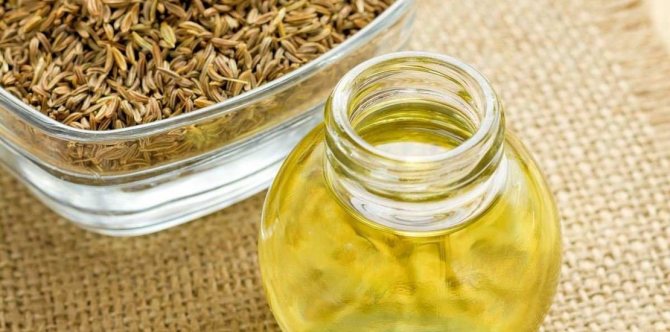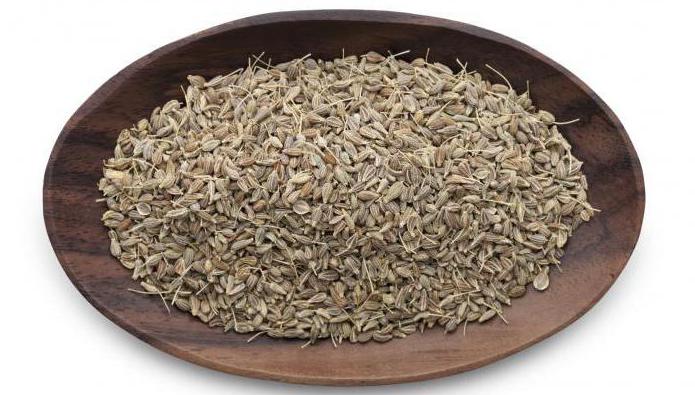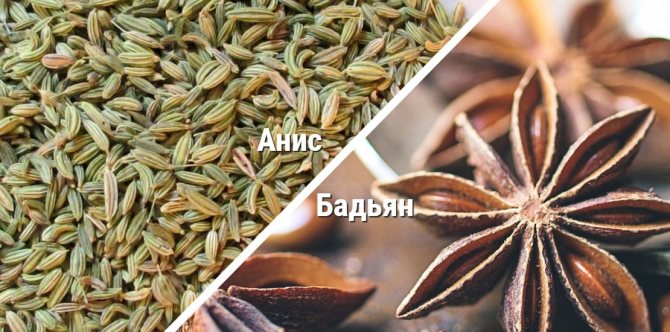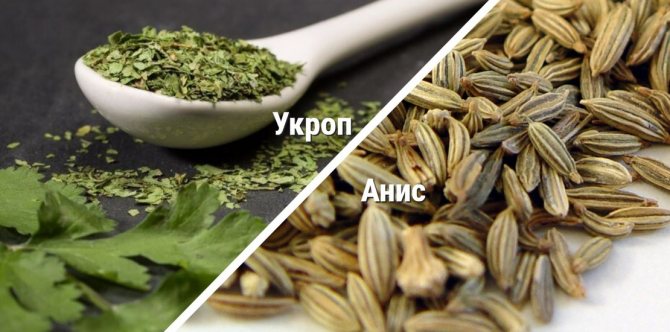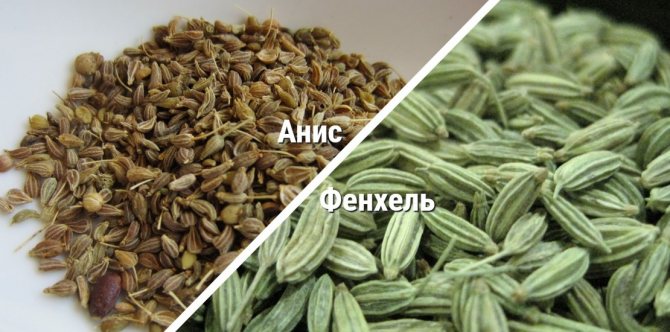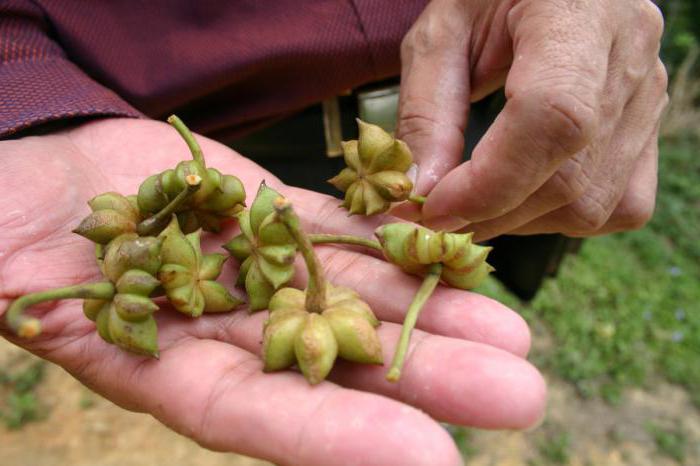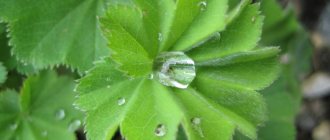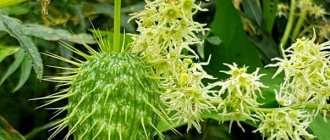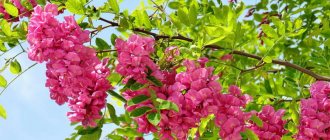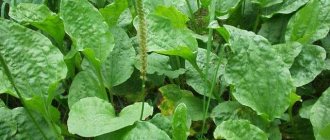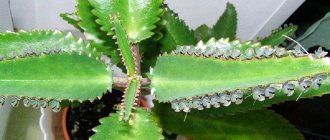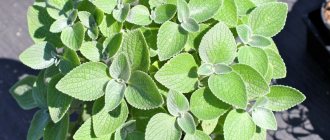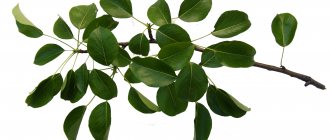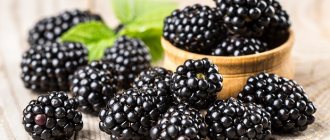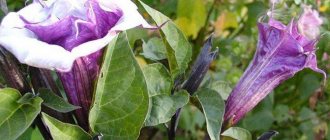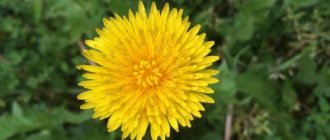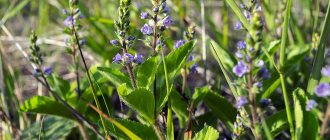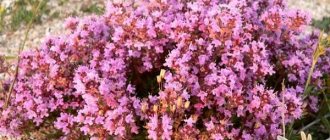Anise growth, collection, storage rules
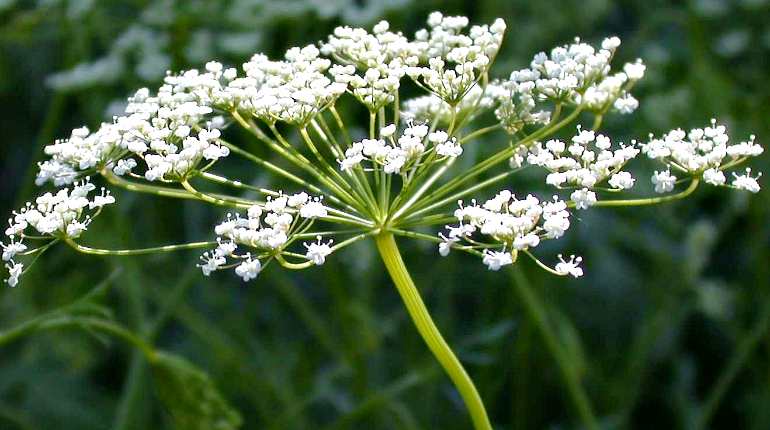
Under natural conditions, anise bushes are found only in Greece. The warm country is also considered the birthplace of the plant - it was from here that it spread throughout the world.
In Russia, anise is cultivated only in the European part. Cold regions are not the best choice for growing grass, unstable temperatures have a detrimental effect on delicate crops.
It is recommended to harvest the fruits of anise from the middle of summer. The main sign of the readiness of plant materials is the browning of the seed pods. Separately, the grains are not collected - they usually cut off the entire aerial part, using a sharp pruner, a sickle, and immediately send it to dry.
Dry the aerial part of the grass under covered sheds, in the fresh air. After drying, threshing is carried out, the seeds are removed by blowing from impurities. The last stage in the procurement of a valuable component for making homemade medicines is another drying.
It is not recommended to use an oven - an incorrectly selected temperature will serve as the main reason for the destruction of a valuable element - essential oil.
Store dry plant seeds in glass containers that are tightly sealed. In a cool dry room, the grains will retain their medicinal properties without loss for 3-5 years.
History of special
Due to its pleasant taste and rich aroma, which the plant owes to the essential oils in the fruit, anise has been known since ancient times. The spice was widely used by the ancient Greeks, Romans and Egyptians, not only in cooking, but also in medicine. For example, the Egyptians baked bread with the addition of spice, while the Romans used the plant for health purposes.
Pliny, Hippocrates, and Avicenna mentioned the beneficial properties of anise, such as rejuvenating the body and the ability to freshen the breath.
In addition, in ancient times, the plant was used to purify and aromatize the air in the room. Anise was also used as a remedy to ward off bad dreams. To do this, they tied a branch of a plant at the head of the bed.
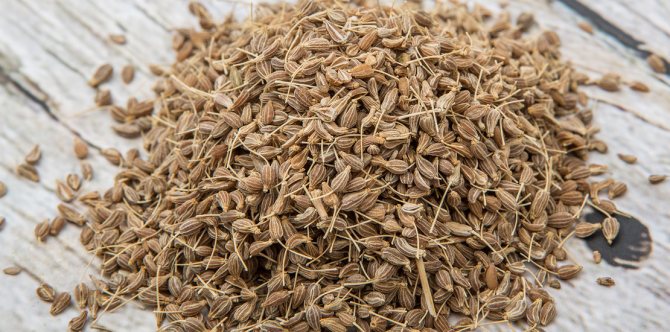

Anise oil in the pharmacy
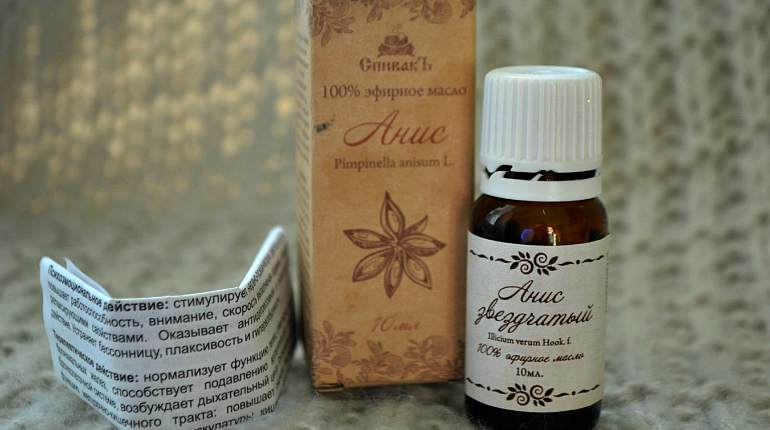

The medicinal qualities of anise are recognized even by official medicine. In pharmacies, seed oil is sold, which has tonic, expectorant, tonic, diaphoretic properties. The drug is also used for lactation disorders, metabolic and digestive processes.
Often the drug is used for colds accompanied by fever, severe cough. The tool promotes the discharge of mucus, actively removes phlegm from the respiratory tract. It is recommended to apply the oil externally, internally, as inhalation.
An article for you:
Medicinal properties of sprouted barley and its use in folk medicine
Anise oil is also used for cosmetic purposes. The drug contains substances that start the process of rejuvenating the dermis, activating the production of substances responsible for the firmness and elasticity of the skin.
The cost of the drug depends on the volume of the container. A small bottle (10 ml) will cost 120-150 rubles.
Anise for women. Anise for men and women
- Anise for men and women
The anise plant was used in medicine by ancient doctors - Avicenna and Hippocrates.Everyone knows that this spice, from which oils and infusions are made, helps in the treatment of colds and gastrointestinal diseases. However, this plant helps to cope with a number of other problems.
Anise for men
It has long been known that anise oil and anise seeds have positive effects on men's health. Representatives of the stronger sex are advised to take a spoonful of the seeds of this spice daily. It is believed that this will help maintain masculine strength for a long time. There is also a recipe for a decoction to improve male potency based on anise. To prepare it, you will not need seeds, but the roots of this plant. For half a liter of water, you need to take a tablespoon of chopped roots. The mixture is cooked under the lid for fifteen minutes over low heat. You need to take it three teaspoons three times a day. In order to achieve optimal results, it is advisable to take the broth in the afternoon.
Anise also helps to fight some manifestations of prostatitis, such as inflammation in the urethra.
Anise for women
The medicinal properties of anise are also useful for the fair sex. In particular, decoctions and essential oils of anise are used to relieve menstrual pain and normalize the cycle in women. Also, this tool helps to improve lactation in nursing mothers. A decoction to increase the amount of milk is prepared as follows: one tablespoon of seeds is taken for one glass of boiling water. The resulting broth must be drunk in two doses. The same decoction helps fight menstrual cramps. You need to take it half an hour before meals, three times a day. In general, anise can be used in the treatment of a wide range of diseases of the female genital organs of an inflammatory nature.
Anise is often used in cosmetology as well. Anise oil stimulates tissue turgor, making them more elastic. Of course, you don't have to start looking for anise oil right away if you want to get rid of wrinkles. This drug is often included in cosmetics for aging skin.
Intimate problems
Even in the Middle Ages, both men and women used anise to solve various intimate problems. For example, anise decoction is used to treat some of the symptoms of gonorrhea - inflammation of the mucous membrane of the urethra.
Please note that herbal treatments must be supervised by a physician. Anise is contraindicated for pregnant women, as well as for people with chronic gastrointestinal diseases. In order for anise to help, it is not necessary to eat it with spoons, drink decoctions, etc. It is enough to include it in food. This is a very tasty spice that can be used in baked goods and soups. Anise seeds are often found in sea fish dishes. You can include this spice in recipes for various pickles. Russian housewives always add anise to sauerkraut.
The article was written by the copywriting studio "UniContent" for the site
Articles Anise ordinary
What is anise oil
Anise oil has been used in cooking and medicine since ancient Greece and Egypt. The specific invigorating scent is pleasant in itself, it soothes and improves mood.
The beneficial properties of anise seeds
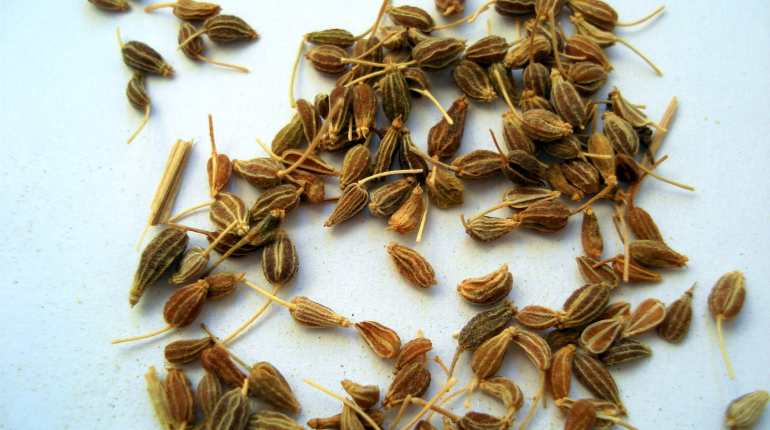

The aromatic grains of anise have numerous beneficial properties that have not been overlooked by alternative medicine. Among the healing qualities are:
increased lactation (active ingredients contribute to the production of breast milk, improve the composition);
- removal of inflammatory processes;
- antimicrobial effect;
- vasodilation (especially important with increased pressure);
- normalization of metabolic processes;
- burning of adipose tissue;
- improving digestion.
Home remedies will be of great benefit in case of respiratory diseases - they will dilute, remove mucus, and facilitate expectoration.
Benefits and medicinal properties
The benefits of plant seeds are due to their high content of essential oil with a lot of useful elements. Anise has anti-inflammatory, bactericidal, antispasmodic effects, helps to normalize the intestines, liquefy and discharge sputum. The tonic and antidepressant effects of the extract are also noted when used systematically.
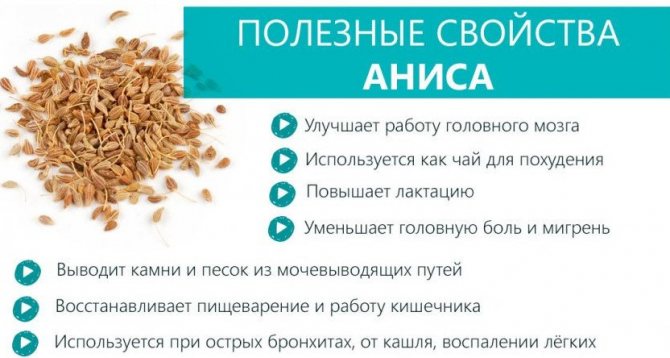

Anise seeds have a positive effect on hormones, increase lactation in women, normalize the menstrual cycle, and have a beneficial effect on the sexual function of men. Gargling with anise extract is used for inflammatory diseases of the mouth and throat; for this, you can purchase ready-made ammonia-anise drops at the pharmacy and use them according to the attached instructions.
The essential oil of grains, rich in vitamin A, is used in cosmetology as an effective remedy for wrinkles for aging and dry skin. Inhalation with anise seed oil is carried out with a runny nose and upper respiratory tract disease. For the same purpose, it is allowed to be used in an aroma lamp to alleviate the manifestations of asthma and bronchitis in complex therapy.
Important! It is necessary to carry out inhalations, being careful to avoid burns of the respiratory tract, and only after consulting a doctor.
Increased milk production during lactation


The most effective remedy for a lack of milk during lactation is anise tea. Simultaneously with the activation of milk production, the composition improves, the amount of useful elements necessary for the baby increases. Step-by-step folk recipe:
- Place plant seeds (5 g) in a cup.
- Steam the plant materials with boiled water (200 ml).
- Cover the cup tightly with a saucer, wrap with a towel.
- Strain after a quarter of an hour.
If there are no contraindications to the use of cow's milk, it is recommended to add this useful product to the drink. Otherwise, it is allowed to put a little sugar, honey (provided that the bee product does not cause an allergic reaction).
Aniseed tea
When the disease has tightened the throat and it is difficult to swallow, cough of any origin (bronchial, allergic, asthmatic or after smoking) pesters, anise tea will help get rid of unpleasant symptoms. It is prepared from fresh or dry plant seeds.
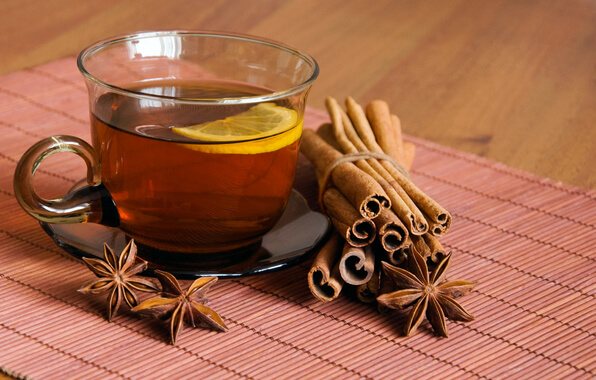

Another beneficial property of tea is the treatment of flatulence, relief from the feeling of heaviness after overeating, and, like ginger, anise relieves nausea.
If you sweeten the drink with honey, you can get an alternative to high-calorie drinks, and the antibacterial properties of anise will freshen the breath after drinking tea.
Seed tea recipe
To make anise tea, you need a teaspoon of seeds and a glass of boiled water. Put on fire and boil for no more than a minute. Let it brew. Drink anise tea a glass after each main meal. This broth is effective for bronchitis, asthma, slow digestion.
Cough treatment


For cough, alternative medicine proposes to carry out inhalations that promote mucus excretion, expectoration. The procedure is allowed even for children - the product is completely safe, does not cause allergies or side effects. Preparation:
- Mix anise seeds, sage leaves, eucalyptus (take the components 3-5 grams).
- Boil the vegetable mixture with boiling water (300 ml).
- Leave to brew a little.
Breathe over the steam for a quarter of an hour. Repeat the procedure 3-5 times a day. It is not necessary to steam fresh liquid every time - you can reuse the product, preheating it, without bringing it to a boil.
Active ingredients
Anise seeds are 18 percent protein, 8-23% fat, 2-7% essential oils, 5% starch, 12-25 percent of the composition is fiber, the rest is moisture.
Anise seeds have a delicious aroma due to the high concentration of anethole essential oil. They also serve as a source of iron, magnesium, calcium, zinc, manganese, potassium, copper. These minerals are essential for maintaining heart function, proper blood circulation, healthy bones, and help convert food into energy. The B vitamins found in anise seeds are important for the functioning of the brain.
Asthma treatment
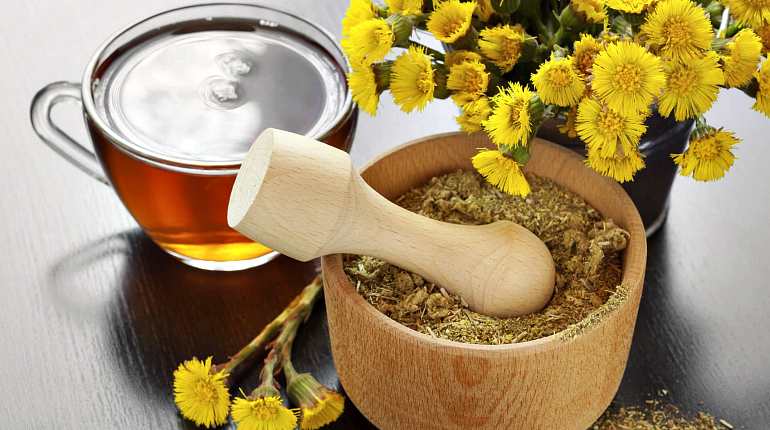

In case of bronchial asthma, it is recommended to use an herbal mixture, in which the main role is assigned to the seeds of anise. The tool will effectively cope with coughing attacks, facilitate breathing, relieve inflammation in the bronchi. Preparation:
- Combine elecampane, Bogorodskaya grass, coltsfoot, tricolor violet (5 g each).
- Mix the herbal mixture, the fruits of the anise (10 gr.).
- Pour the vegetable mass with cold water (500 ml), leave to infuse for two hours.
- Put the container on low heat, boil the mixture, boil for 5 minutes.
- After insisting (after a quarter of an hour), drain, cool.
An article for you:
The health benefits and harms of amaranth seeds, how to take medicinally
Divide the resulting healing agent into three parts, drink throughout the day, observing equal time intervals. The duration of the course is two weeks.
How to choose?
It is best to buy spices not in the markets, where they are in open containers, but in stores or supermarkets, where the spice is packaged in closed packages, since the anise aroma quickly disappears.
When choosing a spice, you should pay attention to the color of the grains, which should be rich and bright. A pale brown color indicates that the spice is old or improperly stored. You should also pay attention to the expiration date.
The packaging must be airtight, without mechanical damage, since the spice, along with the aroma, will lose half of its taste and become useless. In addition, the spice should not be stored in a sunny place, no aroma should emanate from the bag, and the contents should be free-flowing, without seals.
It is unwise to buy crushed seeds, as the spice will very quickly lose its aroma. It is recommended to grind the anise yourself. For the same reason, you should not buy a lot of spices, it is better to buy it in portions, as needed.
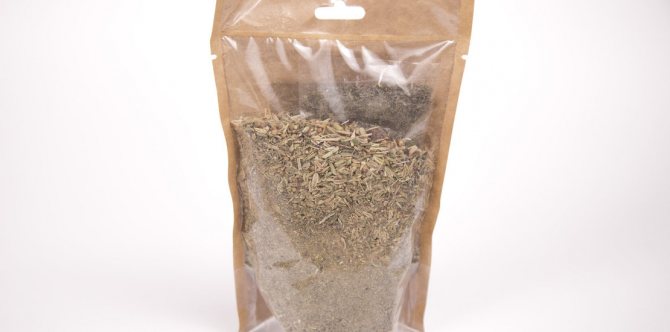

Anise with laryngitis, hoarseness


Anise seed is an effective ingredient in the treatment of laryngitis. Home remedy will quickly help relieve painful sensations, inflammation, hoarseness characteristic of the disease.
Alternative treatment consists in regular gargling - relief will come after the first manipulations. Step by step recipe:
- Combine boiling water (220 ml), plant seeds (15 gr.) In an enamel bowl.
- Cover the container with a lid, send it to a water bath, leave for half an hour.
- Cool the liquid without removing the cap.
- Strain, squeeze the cake.
- Add boiled cold water to the same volume.
Use the prepared infusion for rinsing. Perform manipulations four times a day.
Cooking use
All parts of the plant are used for cooking: seeds, leaves and even umbrellas. Leaves are added to vegetable salads, umbrellas are added to cereals, vegetable side dishes and soups, and dried seeds are widely used in baked goods.
Anise pairs well with spices like cinnamon, vanillin, curry, ginger, bay leaf, and fennel. In desserts, it goes best with apples.
Spice is added during cooking:
- gingerbread;
- cookies:
- cakes;
- mousses;
- sweets and other desserts;
- tea;
- compote;
- juice;
- alcoholic beverages;
- kvass.
Also, anise sprigs can be used for preserving cucumbers and zucchini.
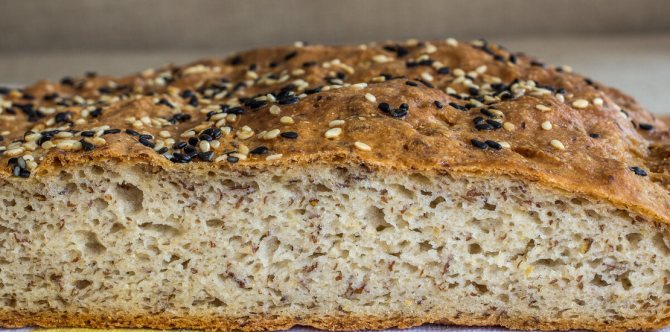

How to brew anise seeds?
On the basis of seeds, you can prepare delicious anise tea, which will surprise you not only with a pleasant aroma, but also with an unusual taste. To prepare a drink, you need to pour 1 tsp. pre-chopped seeds with 1 cup boiling water and boil over low heat for 10 minutes.
You can also brew whole seeds with black tea. To do this, pour 0.5 tsp. grains with 1 cup water and simmer over medium heat until the anise is tender. Then the liquid must be filtered to remove the remnants of the seeds. After that, you should mix anise water with 1 cup of brewed tea and add sugar or lemon to taste.
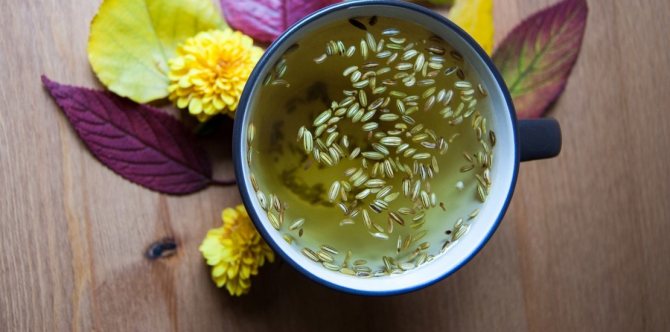

Anise-based decoction
To prepare the broth, you need to boil 200 ml of water, add 2 tsp. whole seeds and transfer to a water bath. Simmer for half an hour. After the liquid must be filtered through cheesecloth or another filter, add 1 tsp. sugar and cool.
Store in a glass container with a closed lid in a dark place or refrigerator.
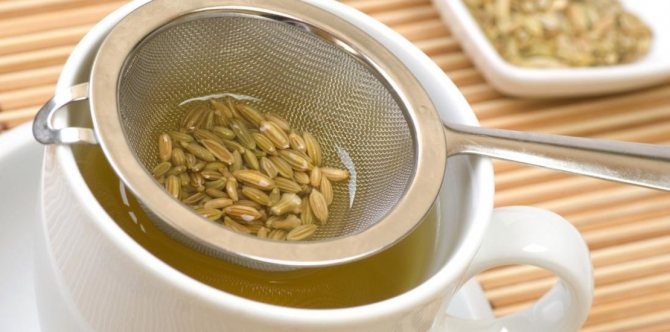

Alcohol tincture
To make a tincture, you need to take 0.5 liters of alcohol (40-45% strength), 10 g of anise seeds, 3 g of star anise, 1 tsp. caraway seeds and 1 tsp. Sahara.
All spices (without sugar) must be mixed in a glass vessel and filled with alcohol. Then the container should be closed with a lid, shake the contents and put in a dark place to infuse for 14 days.
Then the workpiece must be filtered with gauze rolled in several layers. After the drink, you can sweeten it a little. To do this, you need to dilute the sugar in 1 tsp. warm water and add to the tincture. After a couple of days, the drink can be drunk.
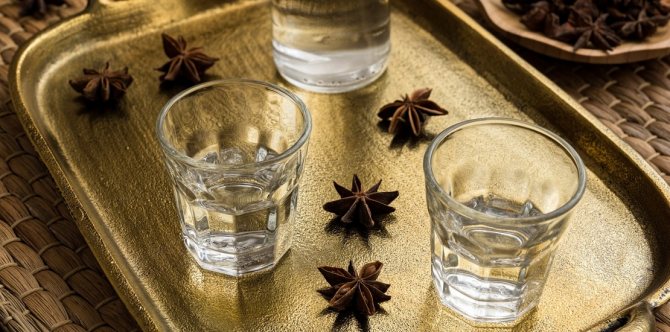

What to replace in the recipe?
During cooking, you can replace anise with star anise, but in smaller quantities, or fennel. During conservation, you can replace the spice with dill.
Constipation treatment


For constipation, alternative medicine advises to use anise grains, which gently cleanse the intestines. The broth is allowed to be used by children after 5 years old, but only with the permission of a specialist.
Steam the plant component with boiling water (for 15 grams of seeds, 100 ml of liquid will be needed). Leave for half an hour, drain. Drink the composition in one go. Do not add sweet ingredients that improve the taste - the effectiveness will be significantly reduced.
Take a fragrant liquid three times a day. The duration of treatment is only three days. This is usually enough to cope with the longest-lasting constipation, but if there are no results, see a specialist immediately.
How to store?
Only by observing certain rules can you preserve all the taste and useful qualities of the spice.
Conditions
You need to store the spice in a glass jar with a lid tightly fitting to the neck. For storage, choose a dark and dry place where the container will not be exposed to sunlight or hot vapors generated during cooking.
You can save the spice in its original packaging if you tightly close the incision site with clamps. But in a jar, anise will last longer.
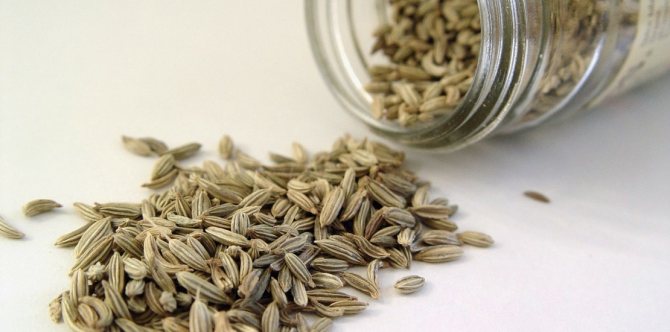

Term
If the requirements described above are observed, the spice can be stored for 3 years.
Reducing pressure
It is recommended for hypertensive patients to use alcoholic infusion against pressure surges, which normalizes the indicators in a short time. The main condition for treatment is the absence of prohibitions on the use of alcohol-containing formulations.
Plant seeds (20 gr.) Combine with alcohol (can be replaced with good homemade pervac). Alcohol will need 350 ml. Leave to infuse in a dark, cold room, strain after three weeks.
Take a fragrant medicine in the morning, in the evening. The dosage is a teaspoon. Do not use the tincture in its pure form - prepare the solution by mixing with a small amount of water.
An article for you:
Watermelon seeds: benefits and harms to the health of women, men, children, use during pregnancy
Treatment is carried out in courses - a month of admission, two weeks off. Can be combined with medical therapy prescribed by a doctor, but only with the permission of a doctor.
Replacing or combining anise and star anise with other seasonings
Among the spices that can replace star anise, the first and second places are occupied by cumin and cinnamon. Only the third place was given by cooks to ordinary anise. But you can combine star anise with cinnamon, ginger, cloves, caraway seeds and garlic. At the same time, the seeds of herbaceous anise are replaced with fennel, star anise or caraway seeds. They also work well with these spices in combination, as well as coriander or bay leaves. Skillful use of various spices and an attentive attitude to the peculiarities of each of them will help to make the everyday menu not only tasty, but also varied.
Anise for weight loss


The seeds of the plant contain a number of substances that can break down adipose tissue. Regular use of a drink prepared on the basis of aromatic raw materials will help to cope with excess weight, tighten sagging. Preparation:
- Combine a slice of ginger root, anise grains (5 gr.).
- Brew with boiling water (180 ml).
- Wait half an hour, drain.
Take a drink only in the morning instead of the usual coffee, tea. It is recommended to simultaneously correct nutrition (reduce the number of meals containing animal fats, sugar, flour), increase physical activity.
You should not take anise drink for more than a month. If necessary, take a break (2-3 weeks), continue losing weight.
Anise face lotion


The use of fragrant grains in cosmetology is an effective way to cope with wrinkles, uneven shade, flabbiness, and enlarged pores. At home, it is recommended to prepare a scented lotion that is approved for all types of skin.
Combine anise seeds, thyme herb, calendula, chamomile (10 g each). Brew with boiling water (260-270 ml), leave to cool.
Strain, pour into a clean bottle, refrigerate. Wipe the skin three times a day. To increase the effectiveness, thoroughly cleanse the dermis before use.
Possible contraindications
Despite the benefits, aniseed-based products can be harmful.
- They are contraindicated for the following categories of persons:
- pregnant women;
- people with diseases of the digestive system, in particular ulcers, colitis, hyperacidity;
- with an allergy to the product;
- with diseases of the skin (acne, acne, inflammation);
- children under the age of 12.
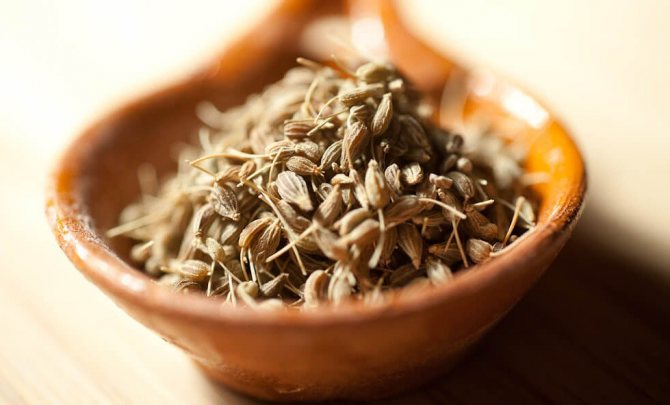

Anise seeds, due to their rich vitamin and mineral composition, have many beneficial properties on the human body. The main thing is to properly prepare the funds, adhere to the recommendations and consult a doctor if you have a serious illness.
Prohibitions on the use of anise grains
Seeds have a very small number of prohibitions, but it is better to familiarize yourself with contraindications in advance - this will prevent unpleasant complications. It is strictly forbidden to use home remedies based on grass seeds in such cases:
- during pregnancy (active ingredients can negatively affect the growth, development of the fetus,
- harm the female body);
- with allergic reactions, hypersensitivity;
- in case of disorders of the digestive tract.
Acne, rashes, cracks, wounds are a reason to refuse to use funds externally. Treatment can end with inflammatory processes.
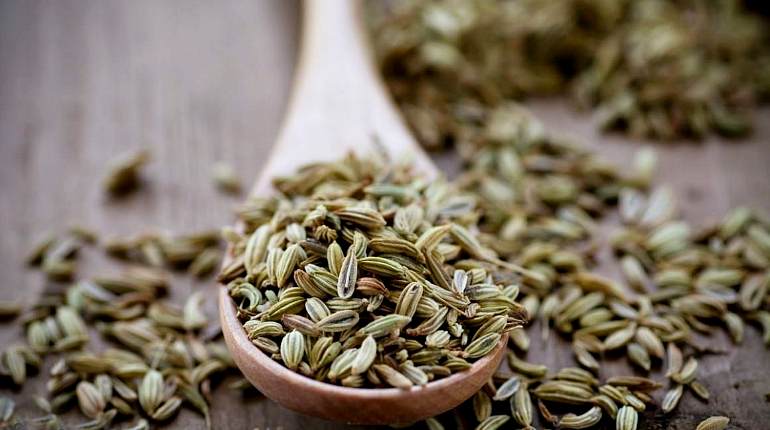

Anise is a plant that has many advantages. The use of medicinal products at home will help to cope with health problems, increase the work of medications, and serve as an excellent prevention of diseases.
The only requirement is to refuse to conduct experiments, it is better to consult with a specialist before treatment, to act only with the permission of the doctor.
Description
Anise ordinary (lat.Pimpinélla anísum) Is a herbaceous annual plant from the umbrella family, reaching a height of 30 to 60 centimeters. A thin, fusiform root turns into a straight, rounded, bearded, short pubescent, branchy stem at the top. Anise has shiny, pinnate leaves. The lower and basal leaves are whole, with long petioles. Anise has small flowers, collected in complex umbrellas. The plant blooms in June-July, and in August the fruits ripen, which are a heart-shaped or ovoid two-seed, brown-gray in color with a characteristic fragrant odor. The second name of this medicinal plant is anise thigh (Pimpinella anisum).

